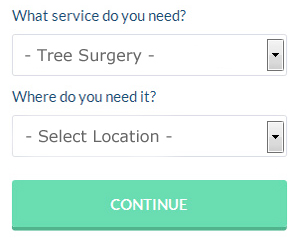Wilmington Tree Surgeon Kent: Trees are an attractive feature of many gardens and properties in Wilmington, and they will often transform an otherwise 2 dimensional area by adding style, substance and structure. However, when poorly maintained or affected by extreme weather conditions, for example flooding or high winds, trees can be a bit of a problem. The best option if you have work that needs carrying out on your trees, is to seek advice from a skilled tree surgeon in Wilmington.
There is an enormous risk of damage to property, the trees or to life, for folks in Wilmington who try to do tree work by themselves, or by hiring a non-qualified operative. However, even for specialist tree surgeons who are acquainted with all the hazards, tree work is not entirely safe. On average there are three deaths and one hundred and forty major injuries per year within the industry, making it among the most dangerous jobs in Britain and certainly not for amateurs to attempt.
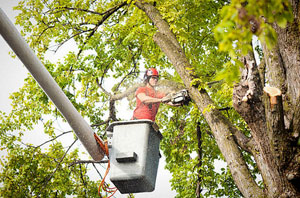
A poorly maintained or damaged tree can also present a threat to life, with around 5 people per year being tragically killed by falling trees or branches in the United Kingdom. You might be liable for any compensation to any third-party due to the consequences of your actions, if you hire somebody to conduct tree work and there is an injury, or damage to property. This is why it is imperative to retain the services of a certified tree surgeon to work on your trees in Wilmington. (Source - HSE).
CHOOSING A TREE SURGEON IN WILMINGTON - There are two trade bodies that a decent Wilmington tree surgeon should really be a registered member of. The websites of both the International Society of Arboriculture and the Arboricultural Association allow you to check up on the membership and professional status of any tree surgeon in Wilmington. To discover whether any particular local tree surgeon has ARB Approved Contractor status and has membership of either of these two associations, you can check this webpage.
You're able to get hold of these trade organisations for assistance in arbitration and for help and advice, if there is a problem at any point during the work, or after it has been concluded.
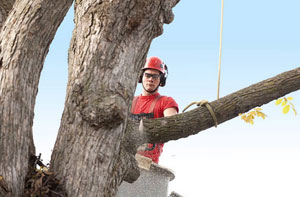
You should politely decline the offer of an estimate from anybody who is not on this directory list, and carry on your search for a fully qualified and approved contractor. It's wise to get at least 3 quotations from different companies in Wilmington, as soon as you've carefully checked their professional qualifications and memberships. There are several vital questions that you need to ask whilst you're acquiring these quotes, and because of the risks involved in tree work, you must make it crystal clear that you really need the answers. You should for instance ask:
- Can I contact a recent person you have worked for so I can check the quality of your work? Independently examining any recent work is always advisable.
- Can you provide a quotation in writing? You should NEVER accept a verbal quote only. Only ever accept a written quote.
- Can you show a NPTC certificate for chainsaw use, and documentary evidence of your qualifications and professional memberships? Any tree surgeon who uses a chainsaw, must by law hold NPTC/LANTRA certification. Qualifications may include City and Guilds Certificates and National Diplomas in Arboriculture.
- Precisely what is your level of insurance cover? Do not even consider a tree surgeon in Wilmington with any less than £5 Million public liability insurance as stated by the ISA and AA.
On the written quote that you receive, you'll need there to be clear and accurate information on all the tree work that is being undertaken. It should include details about any trees which may be protected, and the steps required to obtain permission to carry out work on them, and also state who's responsible for the removal of debris, tree branches and stumps. You should also make sure that VAT is included on the quote. It is crucial to recognise that you've got a responsibility to employ only trained tradespeople to work on your property and trees.
PRIOR TO WORK COMMENCING - Your selected Wilmington tree surgeon should enquire whether any of your trees are protected and make the necessary steps to make sure that any tree work can be given the go-ahead from the local authority. Even protected trees require maintenance so as to cut back old or damaged wood and ensure public safety, so finding a tree has protected status does not mean that work cannot be carried out.
If your property in Wilmington is located inside a conservation area, the Local Planning Authority will need at least six weeks written notice of any tree work you're planning to do. This written notice isn't required if the stem of the tree is less than seventy five millimetres in diameter when measured at 1.5m from the ground. If the branches of a protected tree need to be pruned or thinned to sustain and encourage growth, it is also not necessary to supply written notice.
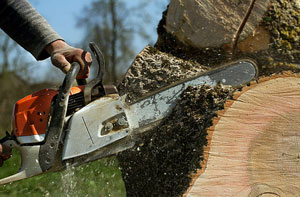
Your Wilmington tree surgeon will determine the remedial treatment needed and how the required outcome can be achieved with safety in mind after carrying out a thorough assessment of your trees health. Public spaces, your property and any parts of neighbouring properties that could be affected by falling branches will all be given a full risk assessment. At this point, the amount of workers required and the level of protection needed will also be determined. To keep the public and other property safe from damage or harm, this will include both personal protection equipment and other safety measures.
ON THE DAY OF WORK - To keep unauthorised persons away from the area of work, safety measures and barriers will be put in place before any tree felling, cutting of branches or climbing is started. Passing traffic may need to be temporarily halted if there's a threat of debris falling into a public highway.
Different types of work will require the tree surgeon to have different degrees of protection. When working with a chainsaw, they will at the very least be wearing specialist protective clothing to prevent serious cutting injuries to the hands, legs and torso. Every operative involved in the work, must at all times be wearing eye and head protection, and high visibility clothing.
Extra staff will usually be required to help with the safe removal of high branches and pieces of tree trunk, especially if working at height is involved, and where ladders and associated climbing equipment is being deployed. For removing waste materials, access to the work site will be needed. Therefore, it is a good idea to inform your next door neighbours, because a skip or pickup truck will need to be parked as close as possible to the work area whilst the work proceeds.
UPON COMPLETION OF WORK - Once the tree work has been finished all of the waste can be hauled away and the whole site cleared of all debris. A certificate of work done will then be created by your tree surgeon, particularly where the trees are under a protection order, which will be signed off and a copy presented to you. Roads and pathways can then be re-opened, and any safety measures places in public areas removed.
If you've got any complaints about or issues with the completed work, you should get them put right immediately by first of all speaking to your tree surgeon. If any further arbitration is needed, and your tree surgeon is a member of a professional body, you can receive guidance and help from the AA or the ISA in order to come to a satisfactory conclusion.
Locally based Wilmington tree surgery services will most likely have the postcode DA2 and the telephone dialling code 01322. They will work in Wilmington itself, together with nearby areas like Crayford, Horton Kirby, Eynsford, South Darenth, Dartford, Sutton at Hone, Hextable, Questor, Crockenhill, St Mary Cray, Darenth, Hawley, Sidcup, Bexley, Farningham, Foots Cray, and these postcodes: DA2 7DG, DA2 7DN, DA1 1PX, DA4 9EG, DA1 2TB, DA2 7BN, DA2 7EY, DA4 9EQ, DA4 9JD, DA2 7SP.
If you need this type of assistance it is unquestionably far better to hire a competent tree surgeon. Wilmington home and property owners can substantially benefit from the knowledge and skills offered by a seasoned professional.
Tree Root Problems Wilmington
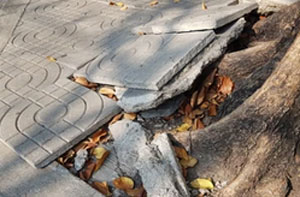
When they're growing too near to your property in Wilmington, some trees have particularly intrusive roots, and can cause problems. Damaged foundations, blocked drains and cracked patios, are among the most widespread issues that you may come across. Maples, elms, sycamores and willows, are notorious for having extremely intrusive root systems.
If you are planting any new trees, make sure they are positioned far enough away from your home, your sewerage system, pathways and patio areas, so they won't cause problems in the future. If some of these issues are already being caused by established trees which are growing too near to your house, you should get hold of a tree surgeon in Wilmington for advice and guidance.
This isn't really the kind of task you should try to do for yourself, and just hacking away at the offending roots could kill off the tree or severely threaten it's health in the future. Understanding which roots can be safely cut, and which roots should be left is the domain of the specialist, and a professional Wilmington arborist will ensure that the tree is still able to get adequate water and food to successfully survive.
Structural problems in subterranean drainage systems are sometimes caused by shrub and tree roots, because a continuous source of nutrients and water is present in this environment. Blockages and joint failure can occur, when teeny tree roots compromise a drainage system's joints, establish themselves and develop into huge root balls. To get rid of the tree roots that are causing the problem, specialist root removal solutions will be provided by some local tree surgeons, who'll use electro-mechanical equipment, manual rod clearance or high pressure jetting.
Dutch Elm Disease
Destroying tree stocks and killing tens of millons of elm trees throughout Britain over the past 50 yrs or so, Dutch Elm Disease (Ophiostoma novo-ulmi) is not so widespread now, as it was previously. Inadvertently imported into the UK from Canada in the late Sixties, Dutch Elm Disease is spread by the elm bark beetle (particularly the Scolytus genus) and caused by a fungus called Ophiostoma novo-ulmi.
Through the nationwide transportation of elm products like saplings, elm crates, mulching bark, and logs with the bark still attached, it quickly spread through Britain after first arriving. This awful disease did not just impact elms in the UK, but also devastated tree stocks in continental Europe and North America. While the origins of DED are as yet unproven, the suspicions are that it first came from Asia (most likely Japan).
Generally first showing up in early summer, the recognisable symptoms of DED disease are:
- Clusters of yellow leaves that wilt and then fall.
- Shoots that die back from the tip.
- Twigs with rings or spots in cross-section.
- Twigs that turn into a "shepherd's crook" shape.
The chopping down of dead, infected and dying trees, has effectively removed the beetle's habitat, and over the last few years the spread of DED has been slowed down. The propagation of young saplings that are so far resistant to Dutch Elm Disease is a continuing project.
If you are suspicious you might have elm trees in your garden in Wilmington, that might be infected with Dutch Elm Disease, you could request a diagnosis from the THDAS (Tree Health Diagnostic and Advisory Service), or speak to your local tree surgeon for advice.
Accidents Through Tree Surgery
The work carried out by tree care professionals in Wilmington can be quite hazardous. Most tree work involves a risk of injury to both operatives and those on the ground, therefore all possible safety measures must be implemented when working on trees.
As stated by the HSE, a large majority of serious and fatal injuries are linked to falls from trees, the use of chainsaws, and being struck by a falling tree or branch. In actual fact, the risk of serious injury is higher in tree surgery work than it is in construction.
The most accident claims, when it comes to insurance, are for falling from ladders, lifting injuries and being struck by objects (trees, cranes, grapple hooks, branches, ropes etc).
That is why choosing a competent Wilmington tree surgeon is so important when you have tree care work that needs to be carried out. Quite frequently, accidents that happen in the tree care industry are a consequence of unqualified novices attempting work that they're not equipped for, nor skilled at. Using an experienced and reputable company that has been operating in the Wilmington area for a good few years, is the best way to avoid such problems, and get your tree surgery work done safely and correctly.
Wood Chipping Wilmington
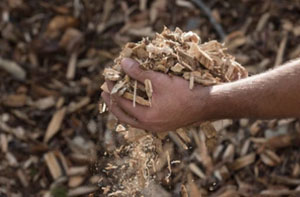
So as to process the large quantities of branches, tree limbs and vegetation that result from their work, the majority of Wilmington tree surgeons will make use of wood chipping devices. Although of course it depends on what equipment is being used, these powerful wood chipping systems can munch up as much as 40 tonnes of material each hour, and even the more commonly used machines can process around five tons per hour, or basically as much as you're able to feed into them.
In addition to providing a valuable material that can be put to a number of uses including; cultivating mushrooms, garden pathways, ecosystem restoration, mulch, weed prevention, wood pulp, biomass solid fuel and landscaping, chopping down waste material in this way makes it easier to transport.
In most cases, Wilmington tree surgeons will cart away all the wood chippings that result from your tree surgery, unless you need them for one of the previously mentioned uses, in which case they will generally be delighted to let you have some or all of them. Whether or not you need any tree surgery doing, you'll find that tree surgeons are a great source for wood chippings that you can use for various purposes throughout your garden in Wilmington. Some tree surgeons will charge you a fee for wood chippings, especially if you want them delivered, others will allow you to have them for free.
Wood chipping equipment is made by a number of companies, some of the most widely known brands include Forst, Forest Master, Hyundai and Timberwolf. (Tags: Wood Chipping Wilmington, Wood Chips Wilmington, Wood Chipping Machines Wilmington, Wood Chipping Services Wilmington).
Deadwooding Wilmington
Dead-wooding (or deadwooding) is a fundamental part of tree care, and all professional Wilmington tree surgeons will undertake this procedure where necessary. When there is a chance of dead or rotting branches falling on buildings, passers-by or vehicles, dead-wooding will be undertaken to carefully remove the offending tree limbs. There could be a number of reasons why the branches of a tree die, the most widespread being disease, damaged roots, pest attacks or heavy shading.
Whilst the objective of safety is the most frequent reason for dead-wooding, the task can also be done for aesthetic reasons and for the overall benefit of the tree itself. Insect infestation and disease can be attracted by an excessive amount of damaged, dying and dead branches, therefore the health of the tree can be radically improved by removing these dead branches. You can also improve a tree's appearance through this procedure, since a tree with lots of dead wood can also look very unappealing.
Usually only larger dead branches will be cut out, as small ones pose minimal risk. Nonetheless, any dead branches that are over 50mm in diameter might need to be removed in areas where a tree hangs over a home, a public space, a garden, a park or a road in Wilmington.
Health and Safety Considerations

Tree surgery can certainly be a dangerous procedure if conducted incorrectly, for this reason one of the main worries is the health and safety aspect. There are plenty of factors that may lead to disaster if the folks engaged in the project are inexperienced or untrained. Amongst the most commonplace situations are no head protection, not putting on hearing or eyesight protection, neglecting to cordon-off the area to safeguard vehicles and passing pedestrians, failure to use cut resistant apparel (particularly boots and trousers), falling branches and timber and hardly any fall protection, in the shape of ropes, harnesses and platforms. What might be in jeopardy due to these incompetencies are the people living in the property, team members working on the ground, garden sheds and fences, the actual tree, pedestrians, the building structure within the property, facilities on the street, vehicles, the tree surgeon (up the tree).
Ash Dieback (Hymenoscyphus Fraxineus)
Most likely to wipe out close to 80 percent of the current UK ash trees, in the next few years, ash dieback (Hymenoscyphus fraxineus) is a destructive fungal disease of ash trees, the first case of which was recorded in Great Britain in 2012. Following the Dutch Elm Disease catastrophe, which killed the United Kingdom's elm trees, ash dieback is going to have an enormous impact on our countryside.
Trees of the Fraxinus genus are affected by this lethal disease, but it has a particularly devastating effect on Fraxinus excelsior (the European or common ash), which is the native UK species. The fungus which causes ash dieback is named Hymenoscyphus fraxineus (H. fraxineus), and it originated in Asia.
Swiftly spread by tiny spores which are able to be blown for miles on the wind, ash dieback is prevalent in most areas of the UK with mortality rates of up to eighty five percent.
Ash dieback strikes trees of every age group and has symptoms such as:
- New growth appears from previously dormant buds (epicormic growth).
- Wilting leaves that turn black in colour and drop early.
- Dark brown lesions (often diamond shaped) form where branches meet with the trunk.
- Leaves with dark patches that appear during the summertime.
- Leaves and new shoots which are visibly dying during the summer.
Even ash trees which are able to fight off the disease, suffer continued attacks year-on-year and sooner or later succumb and die. There's presently no remedy for ash dieback, and no clear method for stopping its spread.
While the "Tree Alert Service" provided by the Forestry Commission is currently only interested in cases reported in new areas where ash dieback hasn't previously been recorded, if you're worried about an ash tree on your property in Wilmington, you should call in a local tree surgeon to verify the diagnosis and suggest a suitable plan of action.
Chainsaws in Tree Surgery
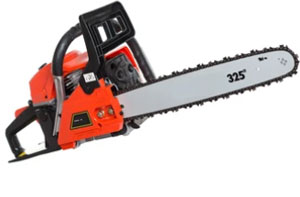
The most commonplace piece of equipment that Wilmington tree surgeons use is the chainsaw. It's an effective and versatile tool, but in unskilled hands, a very dangerous one. Petrol driven chainsaws are the most preferred by tree care professionals, due to their ease of use and portability, although mains electric versions are available, and battery operated chainsaws are becoming more popular in certain situations. Petrol driven chainsaws are the only serious choice for substantial tree work, being extremely powerful, robust and able to slice effortlessly through trunks and branches of any size.
A chainsaw basically consists of a rotating engine-driven chain which is armed with a set of razor-sharp teeth which effortlessly cut through the bark and inner wood of a tree. There are also a variety of types of chainsaw, rear-handled for work at ground level (must be used with two hands), pole saws for hard to reach branches and long distance pruning and top-handled for working at height (and which can be used with one hand if necessary).
Although holding onto a rapidly rotating blade while precariously balancing high up in a tree is certainly not the safest job in the world, it is pretty rare to see a tree surgeon in Wilmington who does not use a chainsaw in his/her day-to-day activities. Being fully trained in the maintenance and safe use of chainsaws is a key requirement for any professional tree surgeon, and is essential before they can even be considered for approval by the ISA or the Arboricultural Association (AA).
The most popular makes of chainsaw used in the United Kingdom by tree care professionals are Husqvarna, Stihl, Hyundai and Makita, although there are many different brands.
Cable Bracing Wilmington
A procedure that is used to give support to a tree when it is showing signs of decay or damage or is a risk to nearby persons or property, cable bracing can be highly useful in the right circumstances. Where older or specimen trees in Wilmington are involved, cable bracing is generally used where it is unsatisfactory to fell a tree or cut out large portions that are unsafe.
The installation of a cable bracing system might be an option in order to support the weak limbs, poor joints and V-shaped forks of a vulnerable tree. Through the fitting of cables and rods most tree surgeons in Wilmington should be able to redistribute structural stresses and prolong the lifespan of old and valuable trees using various forms of bracing work.
Cable bracing does not cause further damage to the tree (as would happen when drilling and bolting the branches), and delivers a shock-absorbing and flexible means of support that is basically non-invasive. A risk assessment, to ensure the safety of the tree and nearby areas, must be conducted prior to the start of any tree cable bracing work in Wilmington.
The ISA (International Society of Arboriculture)
The International Society of Arboriculture (ISA) is a non-profit, international organisation that is based in Atlanta, GA, USA, fostering the benefits and awareness of trees. Serving the tree care industry across the globe, the ISA is a membership association that nurtures the professional practice of arboriculture, and provides qualifications for tree care professionals.
Allowing individuals in the tree care sector to develop their skills, arboricultural expertise and knowledge, the ISA is solidly focused on technology, research and education, which it makes readily available via educational services, events and publications.
Since an agreement was signed in 2016 the Arboricultural Association (AA) has been an associate organisation of the ISA. Providing more opportunities for ISA members in the UK and Ireland, this also strengthened the relationship between the AA and ISA. UK members of the AA are now able to enjoy the benefits of being part of a worldwide tree care network. The International Society of Arboriculture now has over twenty two thousand members worldwide with professional affiliates and associate organisations in EXTRAroot grinding in Wilmington, domestic tree care, root pruning, commercial tree care Wilmington, coppicing in Wilmington, tree removal in Wilmington, tree topping, hedge lowering, expert tree care, staking, dead wooding, landscape clearing in Wilmington, arboriculture, landscaping, vegetation management, tree management in Wilmington, the protection of trees from grazing animals, tree shaping, tree lightening protection Wilmington, crown thinning, damage restoration, tree pruning in Wilmington, forestry management, eco plug treatments in Wilmington, root flare exposure, cut sealing Wilmington, tree planning, retrenchment pruning in Wilmington, safety inspections in Wilmington, brush cutting servicesTEN, and the UK.
Tree Pollarding Wilmington
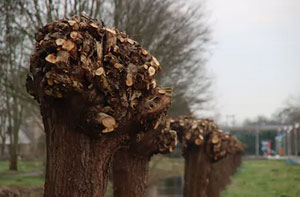
The process whereby the size of a tree is significantly lessened because it's grown too big for its current setting, is referred to as "pollarding". The development of cultivated attributes and the transforming of trees into certain forms or shapes can also be achieved by the pollarding approach. You'll commonly notice trees that have been pollarded beside streets in Wilmington, and also fairly frequently in managed hedgerows For individuals who love trees this is not an especially popular practice, since the consequence is inclined to be somewhat bare and harsh, with the appearance of being practically lifeless. However, in spite of the somewhat ugly appearance of pollarded trees such as beeches, maples, limes, sycamores, oaks, planes and horse chestnuts, there is a positive element to the procedure, in that these trees can be retained when they would otherwise need to be removed.
Removal of Tree Stumps Wilmington
After having a substantial tree felled and removed in Wilmington, you will be left with a further issue - the tree stump. In certain situations it might be acceptable for you to leave the tree stump in place until such time as it decays and rots away by itself. However, stumps in your garden can send out new suckers in an attempt to regrow, and sizeable stumps can take several years to break down, during which time they can be a trip hazard, and eyesore and the perfect hiding place for unwanted fungi, pests and bacteria.
There are various ways that you can remove a tree stump, if you determine that this is the preferred plan of action, although the two key alternatives are stump grinding or stump removal. Below we'll be investigating the stump removal solution.
With regards to getting rid of a tree stump, the 3 main techniques are digging out by hand, chemical treatment or burning. If you've got plans to tackle a stump yourself, the use of any of these tactics could be feasible. If you are intending to get a tree surgeon to carry out the job, they will normally favour the previously mentioned stump grinding technique, although a chemical treatment such as eco-plugging may also be suggested.
Burning a Tree Stump: As it could be at variance with local laws and can definitely be quite dangerous, burning tree stumps is not really a recommended course of action. If you choose this method, great care must be taken. You'll need to drill several holes in the tree stump, and pour in some vegetable oil, you will need to keep these topped up for several days until the stump has become fully soaked. You can then cover the stump with logs or charcoal and set it alight. You or someone will need to continually monitor this until the fire has died out. Make certain that the fire is extinguished once it is completely burned out. You will be able to dig out the roots and stump debris when it has completely cooled down.
Other methods include digging out and clearing all the soil away from underneath the stump, and building a fire in the void which has been created. Of course, there are various scenarios where burning is not suitable, for example when there are buildings, other trees or fences close to the stump in question.
Chemical Stump Killers: Chemical treatment involves the use of a powerful chemical liquid for example Resolva Xtra Tough Tree Stump Killer, Roundup Tree Stump Remover or Vitax SBK Stump Killer. You should always read and follow the instructions to the letter for applications, rates and timings for these chemicals, and be aware that they're toxic and sometimes inflammable. The stump will take several weeks to rot down and can then be chopped up and removed with a spade and an axe.
Hand Stump Digging: Digging by hand is pretty self-explanatory and will involve digging down, cutting all the roots, and releasing the stump. Some type of cable ratchet winch could be needed for the final freeing up process. This type of work isn't for the unfit or faint-hearted, since it is tiring and tedious.
Tree Surveys Wilmington
Tree surveys may be necessary for various reasons, but most frequently when property extension or development is concerned. If you happen to be clearing a piece of land in Wilmington that has trees growing on it, to make way for an extension to an existing property or a brand new home, you will need to carry out a tree survey as required by the British Standards BS5837 (2012). Tree surveys on both private and public property in Wilmington, must be carried out by a certified tree surgeon or tree surveyor.
A properly done tree survey will glean a number of details about all of the trees within a defined area. For example:
- Tree management guidelines.
- A unique tree reference number for every tree.
- The physiological and structural health of the trees.
- The height of each tree.
- The species of trees on the site (either common or scientific).
- The spread of branches towards the West, North, South and East.
- The number of trees (those of over 75mm diameter 1.5m from ground level).
- The ages of the trees.
- The diameter of each tree (taken 1.5m above ground level).
- The existence of any Tree Preservation Orders (TPOs).
- The predicted life expectancy of the trees.
If you are doing work on an existing property in Wilmington but are not changing the footprint of the property and are not changing the access points or service lines, a tree survey will probably not be required.
Tree Surgery Tasks Wilmington

Wilmington tree surgeons will likely help you with root grinding in Wilmington, domestic tree care, root pruning, commercial tree care Wilmington, coppicing in Wilmington, tree removal in Wilmington, tree topping, hedge lowering, expert tree care, staking, dead wooding, landscape clearing in Wilmington, arboriculture, landscaping, vegetation management, tree management in Wilmington, the protection of trees from grazing animals, tree shaping, tree lightening protection Wilmington, crown thinning, damage restoration, tree pruning in Wilmington, forestry management, eco plug treatments in Wilmington, root flare exposure, cut sealing Wilmington, tree planning, retrenchment pruning in Wilmington, safety inspections in Wilmington, brush cutting services and other tree surgeon services in Wilmington, Kent. These are just an example of the tasks that are undertaken by a tree surgeon. Wilmington specialists will be happy to tell you about their entire range of services.
Tree Surgeons Nearby
Also find: Eynsford tree surgeon, Crayford tree surgeon, Hawley tree surgeon, Sutton at Hone tree surgeon, Farningham tree surgeon, Foots Cray tree surgeon, Crockenhill tree surgeon, Horton Kirby tree surgeon, St Mary Cray tree surgeon, South Darenth tree surgeon, Questor tree surgeon, Darenth tree surgeon and more. Pretty much all of these villages and towns are covered by tree care companies. Business and home owners in the area can acquire estimates for tree surgery by clicking here.
Tree Care Services Wilmington
- Wilmington Tree Topping
- Wilmington Hedge Planting
- Wilmington Tree Care
- Wilmington Woodland Management
- Wilmington Tree Inspections
- Wilmington Site Clearance
- Wilmington Crown Cleaning
- Wilmington Tree Watering
- Wilmington Air-Spading
- Wilmington Tree Management
- Wilmington Tree Cutting
- Wilmington Cable Bracing
- Wilmington Tree Pollarding
- Wilmington Stump Grinding
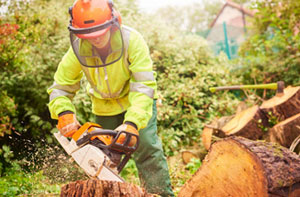 Tree Surgeon Wilmington
Tree Surgeon Wilmington Tree Care Wilmington
Tree Care Wilmington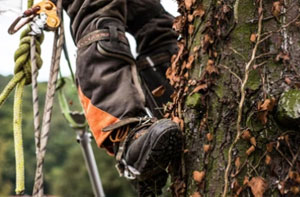 Tree Surgery Wilmington
Tree Surgery WilmingtonIf you would like to get local info relating to Wilmington, Kent go here
Tree Surgery DA2 area, phone code 01322.
Arboriculture Wilmington - Tree Surgeon Wilmington - Crown Lifting Wilmington - 01322 - Vegetation Control Kent - Tree Care Wilmington - Root Removal Wilmington - Tree Surgery Wilmington - DA2



